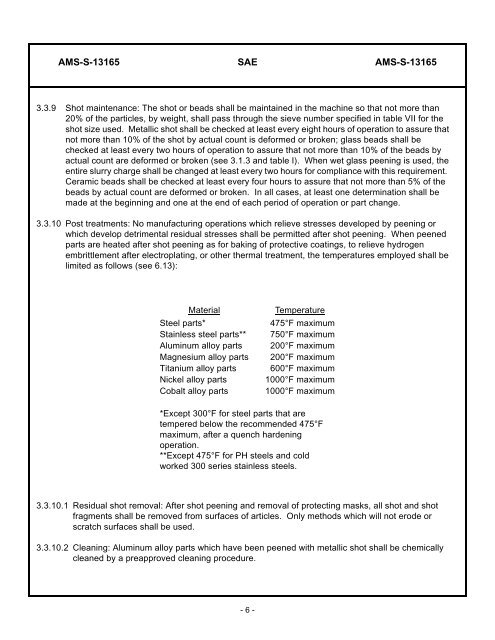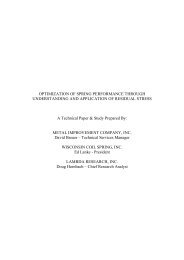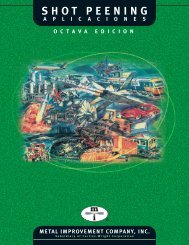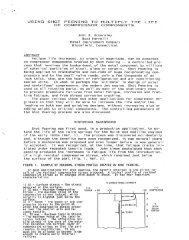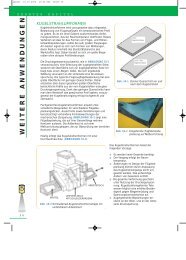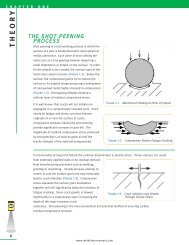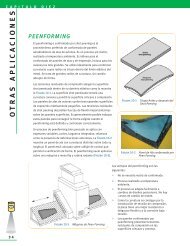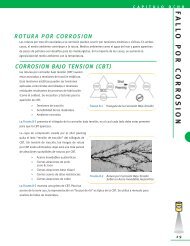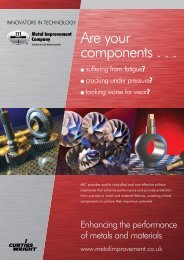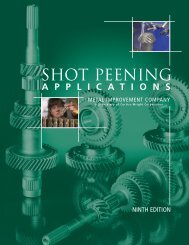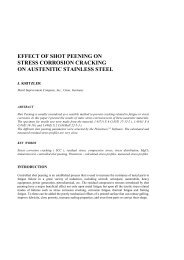AMS-S-13165 - Metal Improvement Company
AMS-S-13165 - Metal Improvement Company
AMS-S-13165 - Metal Improvement Company
Create successful ePaper yourself
Turn your PDF publications into a flip-book with our unique Google optimized e-Paper software.
<strong>AMS</strong>-S-<strong>13165</strong> SAE <strong>AMS</strong>-S-<strong>13165</strong><br />
3.3.9 Shot maintenance: The shot or beads shall be maintained in the machine so that not more than<br />
20% of the particles, by weight, shall pass through the sieve number specified in table VII for the<br />
shot size used. <strong>Metal</strong>lic shot shall be checked at least every eight hours of operation to assure that<br />
not more than 10% of the shot by actual count is deformed or broken; glass beads shall be<br />
checked at least every two hours of operation to assure that not more than 10% of the beads by<br />
actual count are deformed or broken (see 3.1.3 and table I). When wet glass peening is used, the<br />
entire slurry charge shall be changed at least every two hours for compliance with this requirement.<br />
Ceramic beads shall be checked at least every four hours to assure that not more than 5% of the<br />
beads by actual count are deformed or broken. In all cases, at least one determination shall be<br />
made at the beginning and one at the end of each period of operation or part change.<br />
3.3.10 Post treatments: No manufacturing operations which relieve stresses developed by peening or<br />
which develop detrimental residual stresses shall be permitted after shot peening. When peened<br />
parts are heated after shot peening as for baking of protective coatings, to relieve hydrogen<br />
embrittlement after electroplating, or other thermal treatment, the temperatures employed shall be<br />
limited as follows (see 6.13):<br />
Material Temperature<br />
Steel parts* 475°F maximum<br />
Stainless steel parts** 750°F maximum<br />
Aluminum alloy parts 200°F maximum<br />
Magnesium alloy parts 200°F maximum<br />
Titanium alloy parts 600°F maximum<br />
Nickel alloy parts 1000°F maximum<br />
Cobalt alloy parts 1000°F maximum<br />
*Except 300°F for steel parts that are<br />
tempered below the recommended 475°F<br />
maximum, after a quench hardening<br />
operation.<br />
**Except 475°F for PH steels and cold<br />
worked 300 series stainless steels.<br />
3.3.10.1 Residual shot removal: After shot peening and removal of protecting masks, all shot and shot<br />
fragments shall be removed from surfaces of articles. Only methods which will not erode or<br />
scratch surfaces shall be used.<br />
3.3.10.2 Cleaning: Aluminum alloy parts which have been peened with metallic shot shall be chemically<br />
cleaned by a preapproved cleaning procedure.<br />
- 6 -


